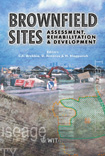Cost-effectiveness In Polluted Site Sampling Campaign
Price
Free (open access)
Transaction
Volume
55
Pages
Published
2002
Size
585 kb
Paper DOI
10.2495/BF020201
Copyright
WIT Press
Author(s)
C. I. Giasi & P. Masi
Abstract
Soil pollution is a difficult subject to investigate, cause to problems connected to uncertainty in polluted areas optimal sampling designing and in right conceptual model determining. After a preliminary sensitive investigation, an appropriate step-by-step approach could allow to reach representative results. After a description of the main codified sampling designs, the present paper is supply a sample case study, which could give some rough guidelines for an effective oriented approach to the subject. In literature there are a lot of indications, but few studies on the necessary sample number to reach a fixed confidence level in operative approaches. In such complex problems, in fact, the uncertainty level knowledge during the investigation is fundamental to attribute the correct significance to results. Coming from a probabilistic modelling of different over- threshold areas shape, the herringbone sampling pattern seems to give good indications about sampling design and number, since from a primary approach to the area, thanks to the possibility of percentage error a priori determining. In the sample site, in Southern Italy, only the \“analyte” contamination has been considered and, based on a herringbone sampling pattern, has been possible to demonstrate, on a kriged prediction map, that few optimal locations could have been chosen for a preliminary sampling campaign. 1 Introduction The perception of environmental damage impact is more and more growing in the common sense, so that, almost in the last years, new environmental studies and specific professions are developing. Another aspect is that a great deal of studies in environmental matter is oriented to define a correct use of
Keywords




